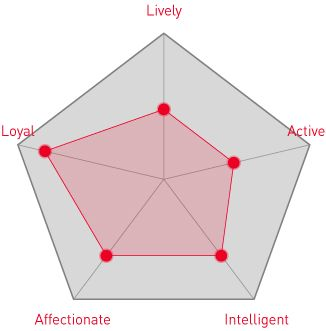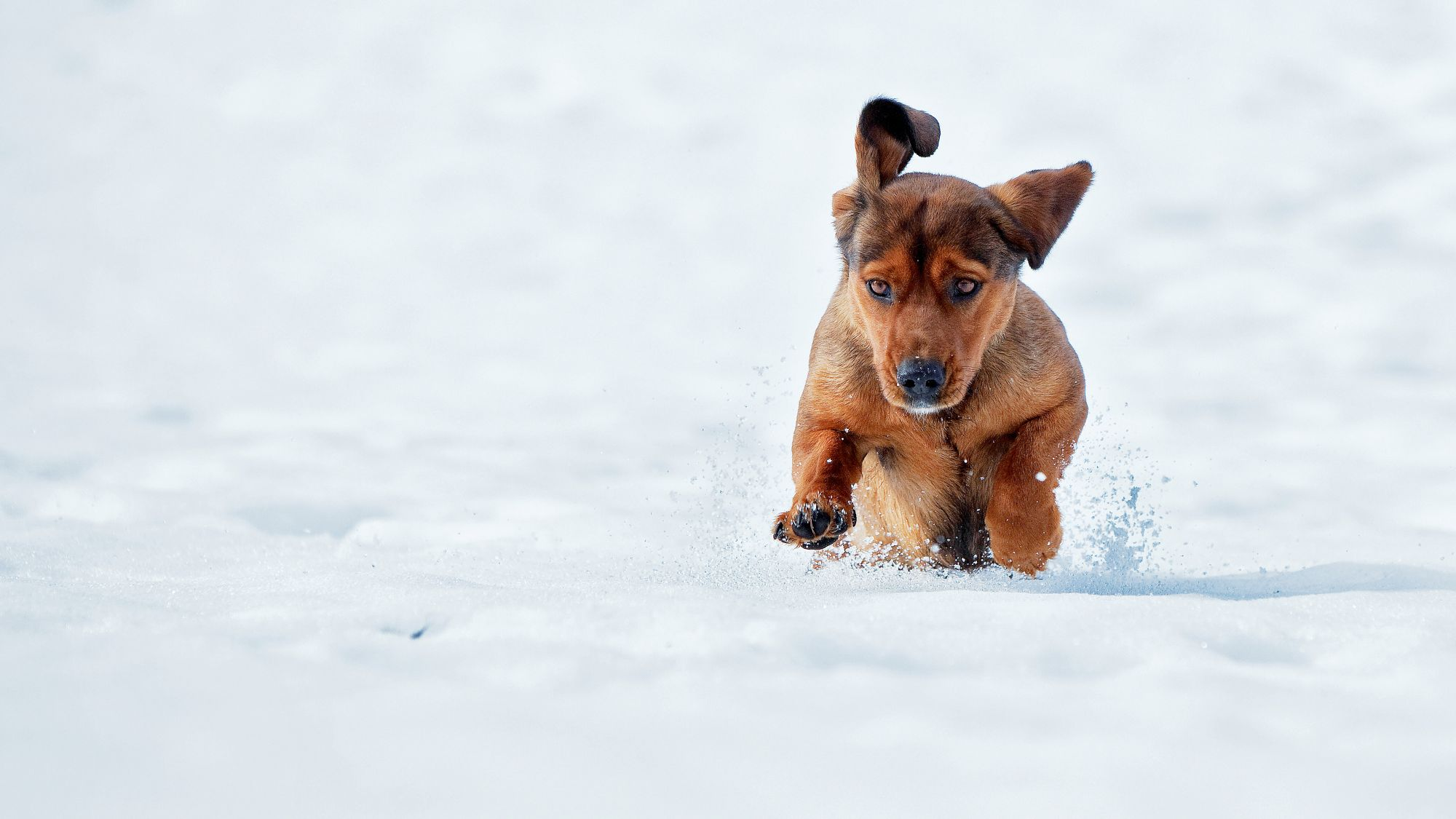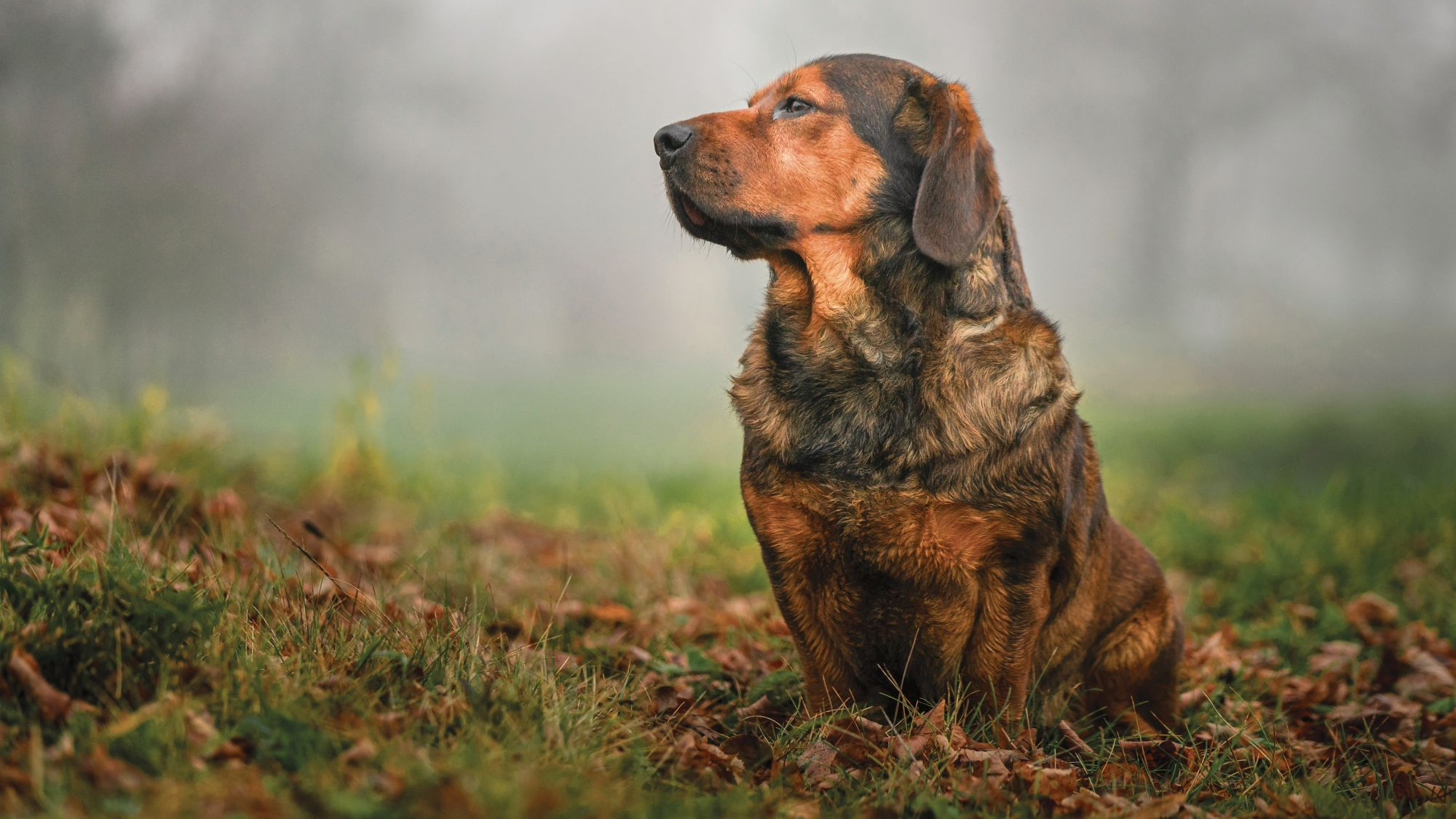
Let's talk Alpine Dachsbrackes
Once a favourite of Austrian royalty, the Alpine Dachsbracke is a rare scent hound breed long prized by Alpine hunters for their highly developed sense of smell and agility. A unique-looking working dog bred for sport, the Alpine Dachsbracke has also gained favour as a devoted family pet packing a large dose of personality into a mid-sized frame. While the Alpine Dachsbracke can make a wonderful companion, this breed is best suited for an active family that enjoys outdoor adventure as much as they do. Which is to say, a lot.Official name: Alpine Dachsbracke
Other names: Alpenländische Dachsbracke, Basset des Alpes
Origins: Austria

| Drooling tendencies |
|
Warm weather? |  |
| Shedding level | Suited to apartment living? | ||
| Energy level (high, low, medium) *: | Medium | Family pet? * |
 |
| Compatibility with other pets | Can stay alone?* | 
|
* We advise against leaving pets alone for long stretches. Companionship can prevent emotional distress and destructive behaviour. Speak to your veterinarian for recommendations.
Every pet is different, even within a breed; this snapshot of this breed’s specifics should be taken as an indication.
For a happy, healthy and well-behaved pet, we recommend educating and socialising your pet as well as covering their basic welfare, social and behavioural needs.
Pets should never be left unsupervised with a child.
All domestic pets are sociable and prefer company. However, they can be taught to cope with solitude from an early age. Seek the advice of your veterinarian or trainer to help you do this.


| Baby age: | Birth to 2 months |
| Puppy age: | 2 to 12 months |
| Adult age: | 1 to 7 years |
| Mature age: | 7 to 10 years |
| Senior age: | 10 years onwards |

1/7
Get to know the Alpine Dachsbracke
All you need to know about the breed
Even-tempered, hard-working, and loyal, the Alpine Dachsbracke was originally developed to perform demanding tasks at high altitudes requiring endurance and prolonged effort in often-harsh weather conditions. With a to-do list like this, it’s no wonder the breed is somewhat of a chimera in appearance. The mix of Dachshund and Austrian Black and Tan Hound in their ancestry has produced a medium-sized dog with a hound-like head, a long, muscular trunk and short legs—all covered in a thick, close-fitting double coat in dark deer red or black with reddish-brown markings.
But the interesting mix doesn’t stop there. The Alpine Dachsbracke temperament is a kaleidoscope of high energy, sociability, affection, and tenacity—the latter sometimes to an extreme. True to its scent hound identity, the Alpine Dachsbracke will track a scent relentlessly once they’ve locked in on it and, as such, they are best kept on the lead when out and about. Additionally, Alpine Dachsbracke owners will want to keep food stored out of range to avoid an impromptu all-you-can-eat canine buffet.
While playful and engaged with their human families, the Alpine Dachsbracke can be standoffish and wary around strangers without prior training and socialisation. Additionally, the breed can turn to mischief without sufficient stimulation and become domineering when given free reign. The Alpine Dachsbracke will flourish with a confident owner capable of establishing themselves as “pack leader” and thrives on a lifestyle that gives them plenty of time exploring the great outdoors alongside all that great family time.

2/7
2 facts about Alpine Dachsbrackes
1. Can’t stop, won’t stop
When it comes to tracking a scent, one could say that the Alpine Dachsbracke’s approach is, well, dogged. In fact, this breed has a sense of smell so highly developed that they are known as cold-nose hounds, meaning they can and will track a scent even after the trail has gone cold. So, remember, if you have an Alpine Dachsbracke at home, keep your favourite snacks on the top shelf.
2. Call me by my name
It is fairly common for people to mistake the Alpine Dachsbracke for a Dachshund, given their long bodies and short legs. But while the breed was originally developed by crossbreeding Dachshunds with scent hounds, the dogs seen today are not a Dachshund cross. Albeit little-known outside of Austria, and even Europe, the Alpine Dachsbracke is now an established breed in their own right.
History of the breed
The origins of the Alpine Dachsbracke can be traced back to the mid-19th century when hunters crossbred larger dogs like the Austrian Black and Tan Hound with the Dachshund to produce a hardy dog capable of tracking game over rough terrain at high altitude.
So reliable was the resulting Alpine Dachsbracke breed that it was soon included in Crown Prince Rudolph of Habsburg’s royal kennel. The prince so appreciated these dogs that he insisted they accompany him on hunting trips to Turkey and Egypt in 1881 and 1885, as their presence in paintings and photographs can attest.
In 1932, canine organisations in Austria formally recognised the Alpine Dachsbracke as the third scent hound breed under the name Alpine-Erzebrigs – Dachsbracke. The name was changed to Alpenlaendische Dachsbracke in 1975, when the FCI recognised Austria as their country of origin. Their final name change came when the FCI included the breed into section two of its scent hounds, referring to them as the somewhat easier to pronounce Alpine Dachsbracke.
Though the need to hunt for survival or as a source of income has waned, the Alpine Dachsbracke is still used on leisure sporting expeditions; however, they have successfully transitioned to the role of companion dogs deeply appreciated for their loyalty and balanced disposition.

4/7
From head to tail
Physical characteristics of Alpine Dachsbrackes
1. Face
Smooth, drooping ears and dark brown eyes.
2. Head
Slightly arched skull with well-defined forehead furrow.
3. Body
Muscular neck, strong, elongated trunk and deep, broad forechest.
4. Tail
Thick, high-set tail, carried slightly downward.
5. Coat
Thick double coat consisting of short topcoat and dense undercoat.

5/7
Things to look out for
From specific breed traits to a general health overview, here are some interesting facts about your Alpine Dachsbracke

6/7
Caring for your Alpine Dachsbracke
Grooming, training and exercise tips
Aside from periods of seasonal shedding when their short, thick coat should be brushed daily, the Alpine Dachsbracke needs no more than a few brushings per week and the occasional bath—particularly if they’ve been outside in the underbrush. Do be sure to trim their nails and check their ears regularly, cleaning the latter when necessary to prevent infection.Because replicating the level of physical activity of the hunt in a home environment can be challenging, and since the Alpine Dachsbracke is prone to putting on weight, particularly after being neutered, the breed needs plenty of outdoor exercise – at least an hour per day plus plenty of playtime – to stay fit and healthy. More is even better.
The Alpine Dachsbracke thrives when given a purpose and kept stimulated. Strong-minded and somewhat independent, the breed responds best to positive reinforcement and consistent, firm training given with confidence.
7/7
All about Alpine Dachsbrackes
Alpine Dachsbrackes generally get along well with other dogs; however, they have a built-in desire to give chase that makes it unwise to leave them alone with cats or other pets.
Though the Alpine Dachsbracke does get along well with children when they are raised together, ultra-lively, they should always be supervised when around smaller children in case their natural prey drive kicks in.
translations.feature.breeds.otherbreeds
Read more on this topic

How your dog's nutrition needs change with age

How to adopt a dog

Things to consider before getting a dog
Sources
1 - Veterinary Centers of America https://vcahospitals.com/
2 - Royal Canin Dog Encyclopaedia. Ed 2010 and 2020
3 - Banfield Pet Hospital https://www.banfield.com/
4 - Royal Canin BHN Product Book
5 - American Kennel Club https://www.akc.org/


